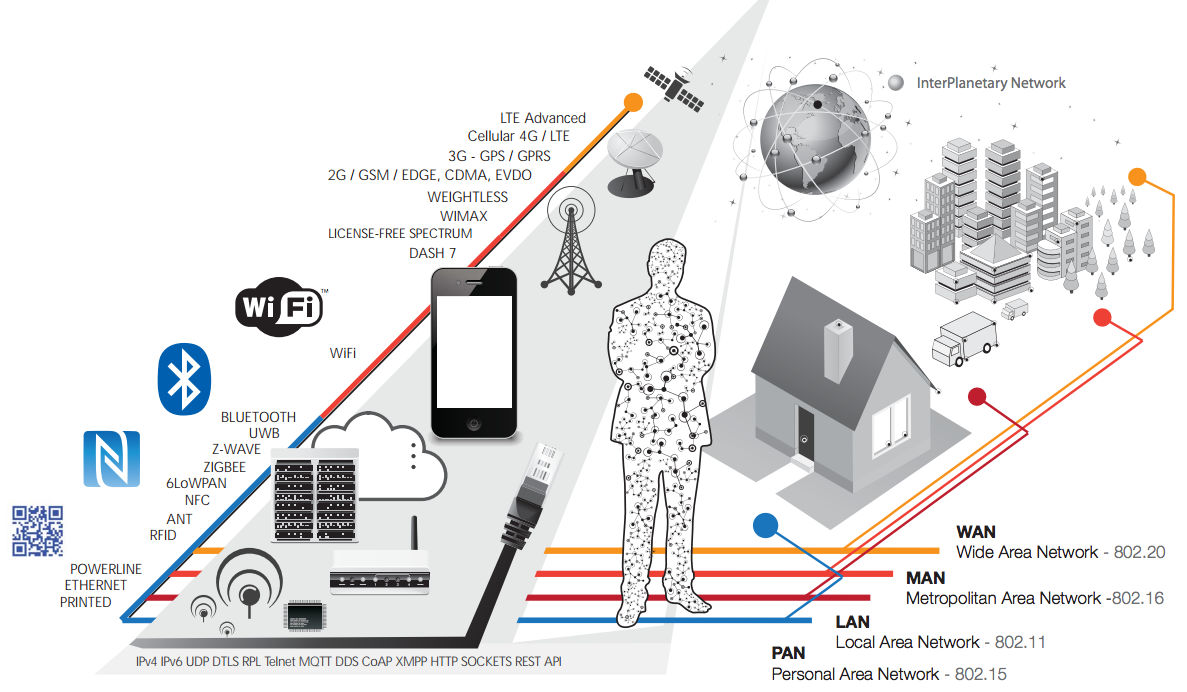IT managers sensitive to cost and battery-life concerns have alternatives to traditional cellular technology. LTE-M and 3GPP are LTE-based cellular protocols optimized for IoT applications, including those that use devices characterized by low data rates, require long battery life, and typically operate unattended. Use-cases include asset tracking and metering.
Other alternatives include SigFox or LoRa low-power wide area networks. “These technologies offer low power consumption and the ability to transmit messages over hundreds of meters,” Harbor Research’s Glaser notes.
In addition, the new WiFi HaLow standard using 802.11ah technology operates in frequency bands below one GHz and promises longer range WiFi with lower power connectivity for compatible products.
Rounding out the networking choices are personal area wireless networks, such as Bluetooth and ZigBee, and satellite communications, which serve shipping and other applications that extend beyond traditional cellular service areas.
Some IT leaders are looking to software-defined networking (SDN) to manage the various technology options. “For us, the key is flexibility and high reliability,” says Avnet’s Phillips. “We’re looking at using SDN in select areas, because we think it gives us new opportunities for handling different classes of service and traffic profiles.”
3. Scalable Storage
Even before adopting IoT, many enterprises have continued to see their storage volumes grow steadily each year. Avnet CIO Phillips estimates that his company has been adding about 30% more capacity annually in recent years and says that rate could accelerate with IoT. “The big discussion internally is what storage capacity to keep on-premises versus moving to the public cloud,” he adds.
Enterprises can simply contract for more storage capacity from cloud vendors as storage needs grow, although that may come with trade-offs in terms of higher latency and less control over how data is managed. The latter may be a cloud deal-breaker for sensitive information in highly regulated industries.
These trade-offs help explain why many large enterprises continue to invest in on-premises and private cloud storage, says Steve Hilton, an analyst at MachNation. “In the end, large enterprises are control freaks, and in the nascent world of IoT, they are concerned about data security and privacy,” he says. “I believe that large enterprises will continue to rely on on-premises and private cloud storage for IoT for two to three years, at least. Smaller enterprises deploying IoT solutions are more likely to use public cloud storage for IoT data.”
Some analysts believe hybrid cloud deployments may be the best options. “Organizations that need on-premises data storage because of security and compliance requirements may keep perhaps 10% to 20% of their data in-house,” Glaser says. “They will then leverage public clouds for rest of their storage needs.”









